What Does The Maneki-Neko Symbolize?
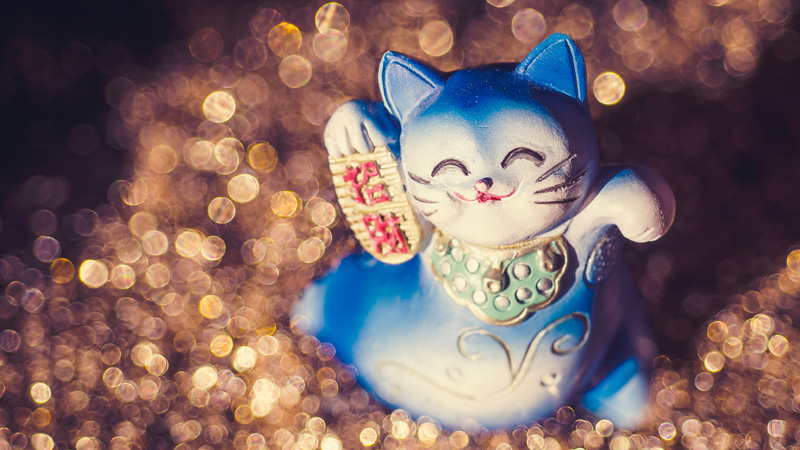
Photo by Jensine Odom on Unsplash
In the enchanting world of Japanese folklore and superstitions, the image of a cat with a raised paw, known as the Maneki-Neko, beckons to both locals and travelers alike. This iconic figurine, often found in storefronts, restaurants, and homes, carries a rich tapestry of symbolism and cultural significance that extends beyond its charming appearance. Join us on a journey to unravel the mysteries and explore the deep-rooted symbolism behind the Maneki-Neko.
The Appearance of Maneki-Neko
Before delving into the symbolism, let's take a moment to appreciate the visual characteristics that define the Maneki-Neko:
Paw Position: The distinguishing feature of the Maneki-Neko is its raised paw, which is often interpreted as a beckoning gesture. The specific paw raised can vary in meaning. If the right paw is raised, it is believed to attract wealth and prosperity, while the left paw raised is said to bring in customers or clients.
Color Significance: The color of the Maneki-Neko holds symbolic meaning. Common colors include white, which signifies purity and happiness; gold, associated with wealth and prosperity; black, believed to ward off evil spirits; and calico, a combination of colors representing good fortune.
Collar and Bell: Many Maneki-neko figurines wear a red collar adorned with a bell. The red color is thought to ward off evil, and the bell symbolizes protection.
Facial Expression: The facial features of the Maneki-Neko often include large, round eyes and a smile, creating an overall expression of warmth and friendliness.
Legend and Origins of the Maneki-Neko
The origins of the Maneki-Neko are shrouded in folklore, with several variations of the story circulating in Japan. One popular tale involves a temple in Tokyo known as Gotoku-ji, where the first Maneki-Neko is said to have appeared in the Edo period (17th to 19th century).
The Tale of Gotoku-ji Temple
As the story goes, a poor temple priest lived at Gotoku-ji with his cat. Despite their poverty, the priest and his cat shared their meager meals. One day, a wealthy and important samurai was caught in a storm and sought shelter under a tree near the temple. The priest's cat, named Tama, gestured for the samurai to come inside the temple by raising its paw.
Curious about the cat's invitation, the samurai followed Tama into the temple just in time for the tree to be struck by lightning. Grateful for the cat's guidance, the samurai became a benefactor of the temple, bringing prosperity and good fortune. When Tama passed away, the priest honored the cat by creating a figurine in its likeness—the first Maneki-Neko.
Maneki-neko in Other Legends
While the tale of Gotoku-ji is perhaps the most famous, there are other regional variations of the Maneki-Neko legend. One such story involves a geisha's cat in Imado, a district in old Tokyo. According to this version, the cat raised its paw to a passing samurai, who then sought shelter in the geisha's establishment. Grateful for the cat's signal, the samurai became a regular patron, bringing prosperity to the geisha.
Symbolism of the Maneki-neko
The Maneki-Neko is more than a charming ornament; it is a talisman believed to bring good luck, prosperity, and positive energy. The symbolism associated with this beckoning cat extends to various aspects of life:
Welcoming Prosperity:
The raised paw, specifically the right paw, is believed to attract wealth and prosperity. Businesses often display Maneki-neko to invite financial success and good fortune.
Attracting Customers:
When the left paw is raised, the Maneki-Neko is thought to beckon customers or clients. This makes it a popular charm for businesses, restaurants, and shops, especially those in the service industry.
Warding Off Evil:
The colors and accessories of the Maneki-Neko, such as the red collar and bell, are symbolic of protection against evil spirits. The figurine is considered a guardian that ensures a safe and harmonious environment.
Promoting Happiness and Joy:
White Maneki-Neko, symbolizing purity, is associated with happiness and joy. It is believed to bring positive energy and a sense of well-being to the household.
Cultivating Relationships:
The Maneki-Neko is also seen as a symbol of fostering positive relationships. It is thought to create a welcoming and friendly atmosphere, encouraging harmony and goodwill among people.
Health and Longevity:
Some interpretations connect the raised paw to the act of washing the cat's face, a gesture associated with cleanliness and hygiene. This symbolism extends to health and longevity, making the Maneki-Neko a charm for overall well-being.
Variations in Meaning:
The specific meaning attributed to a Maneki-Neko can vary based on its color, accessories, and the presence of other symbols, such as coins or fish. For example, a black Maneki-neko may focus on protection, while a gold one emphasizes wealth.
Maneki-neko in Popular Culture
The charm of the Maneki-Neko extends beyond traditional beliefs, permeating modern popular culture in Japan and around the world. Here are some instances where the Maneki-Neko makes its delightful presence felt:
Art and Design:
The image of the Maneki-Neko is a popular motif in various art forms, including paintings, prints, and sculptures. Artists often incorporate the charm and whimsy of the beckoning cat into their creations.
Consumer Goods:
The Maneki-Neko has become a beloved symbol in consumer goods, from keychains and phone cases to clothing and home décor. Its widespread appeal has turned it into a cultural icon.
Manga and Anime:
The Maneki-Neko frequently appears in manga and anime, adding a touch of tradition and symbolism to contemporary storytelling. It is sometimes personified as a character or integrated into the narrative for its cultural significance.
Global Recognition:
The charm of the Maneki-Neko has transcended cultural boundaries, gaining recognition and popularity in many parts of the world. Its universal appeal as a symbol of good fortune has made it a favorite among people of diverse backgrounds.
Collecting Maneki-Neko: A Personalized Charm
The world of Maneki-neko extends beyond its symbolic significance, inviting individuals to choose a figurine that aligns with their personal beliefs, aspirations, and preferences. Here are some considerations for collecting and displaying Maneki-Neko:
Personal Intentions:
Consider your specific goals and intentions when selecting a Maneki-neko. Whether you seek wealth, success in business, or general well-being, there's a figurine that aligns with your aspirations.
Color Choices:
Explore the meanings associated with different colors of Maneki-neko. Choose a color that resonates with your intentions, such as gold for prosperity or white for happiness.
Placement and Direction:
The placement of the Maneki-Neko within your space is crucial. To attract wealth, position a right-pawed Maneki-neko near the entrance of your home or business. For inviting customers, a left-pawed figurine near the storefront is recommended.
Accessories and Symbols:
Some Maneki-neko figurines come with additional accessories or symbols, such as coins, fish, or koban (oval gold coins). These elements may enhance specific aspects of the cat's symbolism.
Personal Connection:
Choose a Maneki-Neko that resonates with you on a personal level. Whether it's a particular expression, pose, or overall aesthetic, your connection with the figurine adds a meaningful touch.
Gifts of Good Fortune:
Maneki-neko makes for thoughtful and meaningful gifts. Consider gifting a friend or loved one a personalized Maneki-neko based on their goals and aspirations.
Conclusion
As we unravel the layers of symbolism surrounding the Maneki-Neko, we discover a timeless charm that transcends generations and cultures. This beckoning cat, with its raised paw and warm smile, invites us into a world where good fortune, prosperity, and positive energy intertwine.
Whether displayed in a bustling Tokyo storefront, a serene temple garden, or on a shelf in your home, the Maneki-Neko continues to beckon with its enduring charm. As you encounter this iconic figurine, remember the tales of Tama, the geisha's cat, and the countless other feline guardians that have graced Japan's folklore. In the presence of the Maneki-Neko, may good fortune and prosperity find their way to you, creating a tapestry of positive energy that enriches your life and those around you. Embrace the beckoning cat, and let its symbolism weave a tale of luck, joy, and enduring charm in your journey through the fascinating realms of Japanese culture and superstitions.
You May Also Like
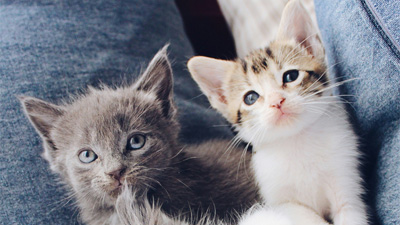 Cat Names100+ Popular Japanese Cat Names With Meaning
Cat Names100+ Popular Japanese Cat Names With Meaning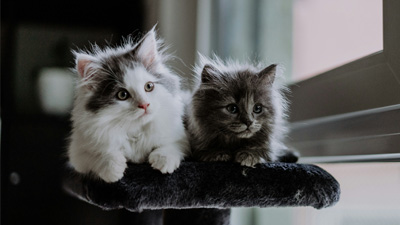 Cat Names20 Cute Japanese Pet Names with Meaning
Cat Names20 Cute Japanese Pet Names with Meaning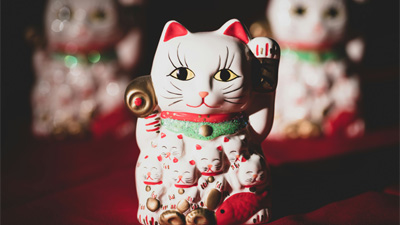 Cat CultureWhat is a Cat Called in Japan?
Cat CultureWhat is a Cat Called in Japan? Cat CultureThe Difference Between Maneki-Neko Left Or Right Paw?
Cat CultureThe Difference Between Maneki-Neko Left Or Right Paw?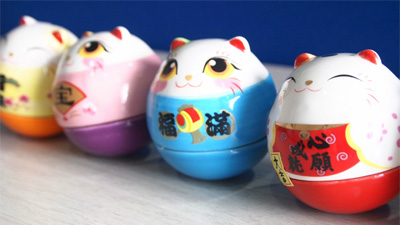 Cat CultureWhat Is The Origin Of The Maneki-Neko?
Cat CultureWhat Is The Origin Of The Maneki-Neko? Lifestyle28 Funniest Cat Jokes Of All Time
Lifestyle28 Funniest Cat Jokes Of All Time